Hops in Beer Brewing: Centennial
Published: July 30, 2025 at 7:31:26 AM UTC
Beer brewing is an art that requires a deep understanding of various ingredients, including hop varieties. Centennial Hops are notable for their unique flavor and aroma. They contribute citrus, floral, and pine notes to beers. Centennial Hops are a favorite among brewers for their versatility and the complexity they bring to different beer styles. Whether you're a novice brewer or an experienced craft brewer, mastering the use of these hops can significantly improve your brewing skills.
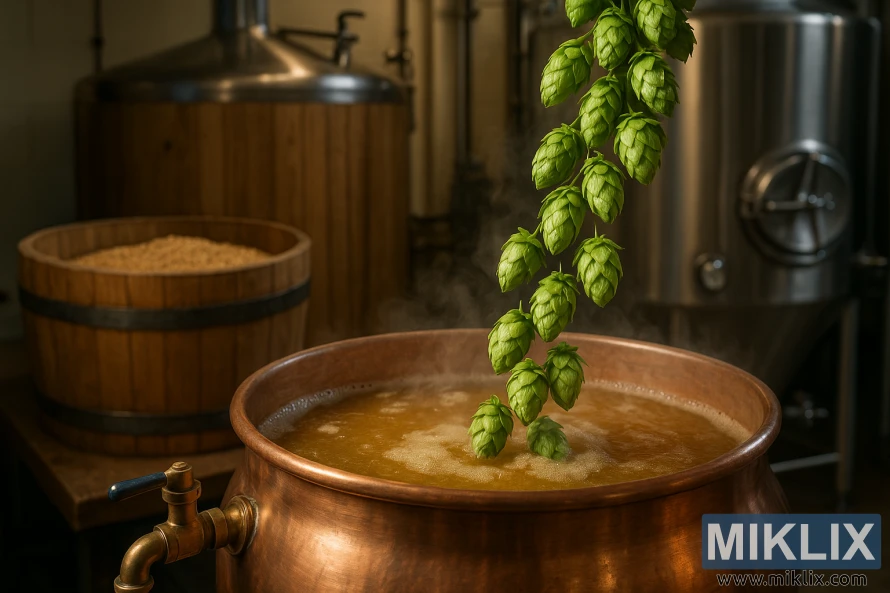
Key Takeaways
- Centennial Hops are known for their citrus, floral, and pine flavors.
- They are versatile and can be used in various beer styles.
- Understanding the characteristics of Centennial Hops is essential for effective brewing.
- These hops can add complexity and depth to your beer.
- Centennial Hops are suitable for brewers of all levels.
The Story Behind Centennial Hops
In the 1970s, the journey of Centennial Hops began, revolutionizing hop varieties. This period marked the inception of a new era in beer brewing, driven by the development of this particular hop variety.
Centennial Hops were developed by the USDA's Agricultural Research Service in Corvallis, Oregon. The breeding process involved crossing the USDA's experimental hop variety with other high-quality hop lines. This created a robust and versatile hop.
The development of Centennial Hops aimed to create a hop variety for multiple uses in beer brewing. This versatility has made Centennial Hops a favorite among brewers.
Centennial Hops were first released to the public in 1990, marking a significant milestone in their history. Ever after, they have become a staple in many breweries, mainly in the United States.
- Centennial Hops are known for their balanced alpha acid content, making them suitable for a wide range of beer styles.
- Their flavor and aroma profiles are characterized by floral, citrus, and fruity notes, enriching the complexity of beers.
- As a result of their popularity, Centennial Hops have become a key ingredient in many American craft beers.
The story of Centennial Hops is a testament to the innovation and dedication of hop breeders and researchers. Their contribution to the world of beer brewing continues to be celebrated by brewers and beer enthusiasts alike.
Essential Characteristics of Centennial Hops
Centennial Hops are a cornerstone in brewing, celebrated for their unique traits. Their alpha acid content, ranging from 9-12%, positions them well for both bittering and adding flavor/aroma. This versatility is a hallmark of their appeal.
Their flavor profile is a standout, featuring citrus, floral, and pine notes. This complex mix enriches the taste and aroma of beers, cementing Centennial Hops as a go-to for brewers.
Centennial Hops are prized for their balanced bitterness and aromatic qualities. Their distinct characteristics empower brewers to craft a broad spectrum of beer styles, from IPAs to pale ales.
- High alpha acid content for bitterness
- Citrus, floral, and pine notes for flavor and aroma
- Versatility in brewing various beer styles
In summary, Centennial Hops' essential characteristics make them a favorite among brewers. Their balanced profile and consistent quality ensure their widespread adoption in the brewing world.
Aroma and Flavor Profile
Centennial Hops are renowned for their unique blend of citrus, floral, and pine notes. This distinct aroma and flavor profile has earned them a special place in the hearts of craft brewers. Their complexity adds depth and character to beers, making them stand out.
The citrus notes in Centennial Hops are quite pronounced, bringing a bright and refreshing quality to beers. These notes are often likened to orange or lemon, adding a zesty citrus flavor. This citrusy zing complements a wide range of beer styles.
Centennial Hops also exhibit floral and pine notes. The floral aspects introduce a subtle, perfumy quality. The pine notes, on the other hand, add a crisp, evergreen flavor. This mix makes Centennial Hops versatile for various beer styles, from pale ales to IPAs.
- Citrus notes: Bright and refreshing, often described as orange or lemon-like.
- Floral notes: Subtle and perfumy, adding depth to the beer's aroma.
- Pine notes: Crisp and evergreen, contributing to the beer's flavor profile.
The balance of these aroma and flavor components is what makes Centennial Hops so popular in brewing. By understanding and utilizing these characteristics, brewers can craft complex and engaging beers. These beers showcase the unique qualities of Centennial Hops, delighting beer enthusiasts.
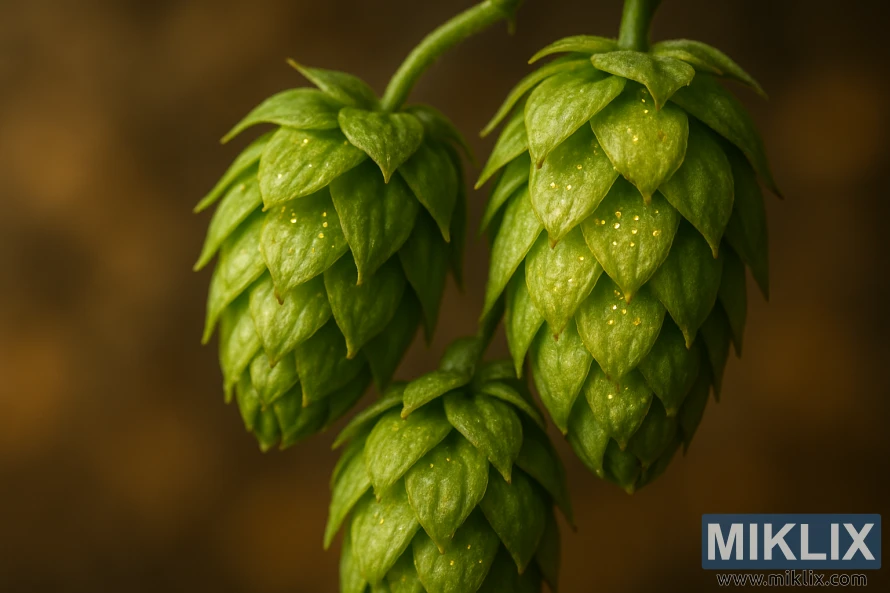
Chemical Composition and Properties
The chemical makeup of Centennial Hops is key in beer brewing. They boast a high alpha acid content, ranging from 9% to 12%. This contributes significantly to their bittering properties. They also contain beta acids, with levels between 3.5% and 5.5%. These beta acids play a role in the overall flavor and aroma stability.
The alpha acids in Centennial Hops are mainly responsible for the beer's bitterness. During brewing, these acids are isomerized, making them soluble. This contributes to the beer's bitterness. The beta acids, while not as directly impactful on bitterness, enhance the hop's overall character and stability over time.
The unique balance of alpha and beta acids in Centennial Hops makes them versatile for various brewing applications. Understanding their chemical composition is essential for brewers. It helps them achieve the desired flavor and aroma profiles in their beers.
- Alpha acid content: 9-12%
- Beta acid content: 3.5-5.5%
- Versatile for various brewing applications
Growing Centennial Hops
For hop farmers, understanding the specific needs of Centennial Hops is key. They require moderate temperatures and well-draining soil. The choice of cultivation site is critical for their growth.
The ideal climate for Centennial Hops includes moderate temperatures and adequate moisture. Hop farming in such regions can lead to healthier plants and higher yields. Regions with harsh winters or extremely hot summers may need additional farming practices to protect their crops.
Soil quality is another critical factor. Centennial Hops thrive in well-draining soil that is rich in nutrients. Farmers should test their soil to determine its composition and pH level. Adjustments should be made as necessary to create an optimal growing environment.
- Choose a location with moderate temperatures.
- Ensure the soil drains well and is rich in nutrients.
- Implement farming practices that protect the hops from extreme weather conditions.
By carefully managing these factors, hop farmers can successfully grow Centennial Hops. This provides breweries with the high-quality hops they need.
Best Beer Styles for Centennial Hops
Centennial Hops are a staple in IPAs and pale ales, thanks to their unique flavor and aroma. Their distinct characteristics make them perfect for brewers aiming to create beers with citrus and floral notes.
In IPAs, Centennial Hops' bitterness and aroma stand out. Their alpha acid content balances the bitterness, while their flavor and aroma compounds add depth to the beer.
Pale ales also benefit from Centennial Hops, adding a subtle hoppy character without dominating the malt. The versatility of Centennial Hops allows brewers to experiment with different techniques to achieve the desired flavor.
Other beer styles that can benefit from Centennial Hops include:
- Double IPAs, where the hop's intense flavor and aroma can be fully expressed.
- American pale ales, where Centennial Hops add a classic citrus note.
- Certain lagers and pilsners, where a touch of citrus can enhance the beer's refreshing qualities.
When brewing with Centennial Hops, it's vital to consider their alpha acid content and the desired bitterness level. This ensures the beer has a balanced flavor, with the hops complementing the other ingredients.
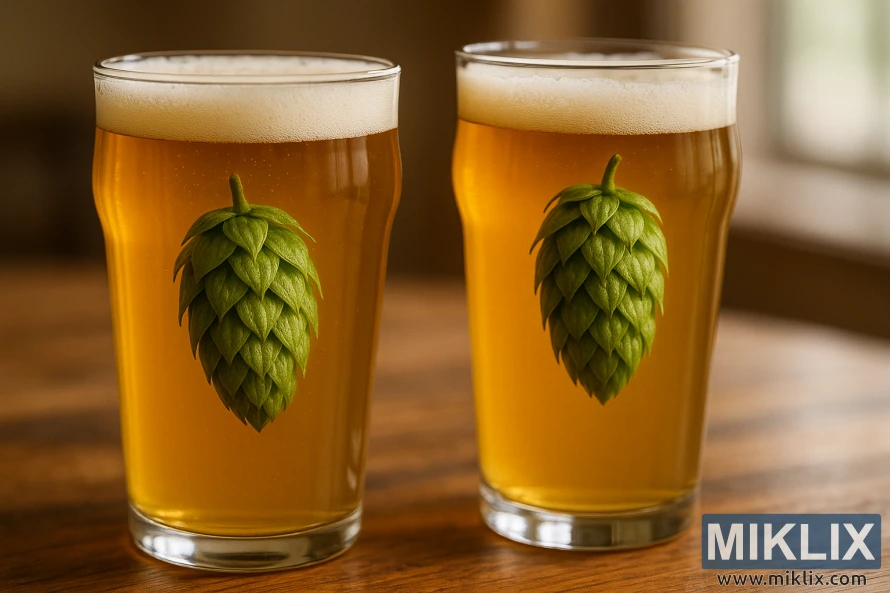
Brewing Techniques with Centennial Hops
To fully exploit Centennial Hops, brewers need to grasp certain techniques. These hops are versatile, fitting well into various brewing methods. They are ideal for both dry hopping and bittering.
Dry hopping with Centennial Hops can greatly boost a beer's aroma. This method involves adding hops post-fermentation. This allows the hops to infuse their distinct flavors and aromas into the beer. When dry hopping with Centennial Hops, it's critical to consider the duration and quantity of hops. This ensures the desired aroma is achieved.
Centennial Hops also play a key role in bittering. Their alpha acids contribute to the beer's bitterness. To effectively use Centennial Hops for bittering, brewers must adjust the boil time and hop quantity. A longer boil enhances bitterness, while a shorter one preserves more of the hop's delicate flavors and aromas.
Several best practices can help brewers achieve the best results with Centennial Hops:
- Blend bittering and flavor/aroma hops for a balanced taste.
- Adjust the boil time and hop quantity to control bitterness.
- Experiment with dry hopping techniques to find the perfect balance for your beer.
- Understand how Centennial Hops complement or contrast with other ingredients in your beer.
By mastering these techniques and understanding Centennial Hops, brewers can craft a wide array of beer styles. These beers will highlight the unique qualities of these versatile hops.
Storage and Preservation Methods
To preserve the flavor and aroma of Centennial Hops, proper storage methods are essential. The quality and potency of these hops can be significantly affected by their storage conditions.
Centennial Hops, like other hop varieties, are sensitive to heat, light, and moisture. It's vital to store them in a cool, dry place, away from direct sunlight. The ideal storage conditions include a consistent refrigerated temperature, typically below 40°F (4°C), and low humidity.
Here are some best practices for storing Centennial Hops:
- Store hops in airtight containers or vacuum-sealed bags to prevent exposure to air and moisture.
- Keep the storage area away from direct sunlight and heat sources.
- Maintain a consistent refrigerated temperature to slow down the degradation process.
- Monitor the hops for any signs of deterioration, such as off-odors or visible mold.
By following these storage and preservation methods, brewers can help maintain the quality and flavor profile of Centennial Hops. This ensures they remain a valuable ingredient in their beer recipes.
Common Brewing Mistakes to Avoid
Mastering the use of Centennial Hops in brewing is more than just knowing their characteristics. It also requires avoiding common mistakes like over-hopping and under-hopping. These errors can significantly impact the flavor and aroma of the final product.
Over-hopping can lead to a beer that tastes bitter and has an unbalanced flavor profile. On the other hand, under-hopping might result in a beer that lacks the desired hoppy characteristics. Understanding the optimal amount of Centennial Hops to use is key.
To avoid these common brewing mistakes, brewers should consider the following tips:
- Understand the alpha acid content of Centennial Hops and adjust the quantity appropriately.
- Balance the hop addition with other ingredients to achieve a harmonious flavor.
- Monitor the brewing process closely to avoid over-hopping or under-hopping.
By being aware of these pitfalls and taking steps to avoid them, brewers can create beers that showcase the best qualities of Centennial Hops. Whether you're brewing an IPA or a pale ale, using Centennial Hops correctly can elevate your beer to the next level.
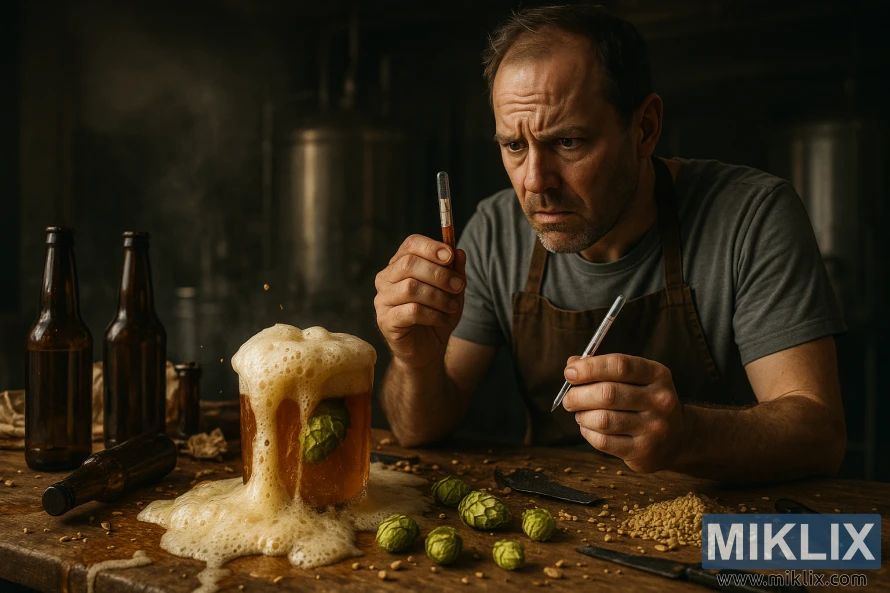
Pairing Centennial with Other Hop Varieties
The art of hop pairing involves combining Centennial hops with complementary varieties like Cascade and Chinook. This creates complex and intriguing flavor profiles.
Centennial hops are known for their floral and citrus notes. They are a versatile choice for brewing. When paired with Cascade hops, they add a layer of grapefruit flavor. This enhances the beer's citrus profile. On the other hand, pairing Centennial with Chinook hops introduces a piney note. This adds depth to the beer's flavor.
- Centennial + Cascade for a citrus-forward pale ale
- Centennial + Chinook for a robust IPA with pine notes
- Centennial + Simcoe for a complex, full-bodied beer
When experimenting with hop pairings, brewers should consider the alpha acid content and the flavor profile of each hop variety. This ensures a balanced brew. The key to successful hop pairing is understanding how different varieties complement or contrast each other.
By thoughtfully combining Centennial hops with other varieties, brewers can craft unique beers. These beers stand out in the craft brewing world.
Commercial Examples and Success Stories
Centennial Hops have become a staple in many commercial beers, showing their versatility and unique flavor. Breweries worldwide have embraced these hops to create distinctive brews that captivate beer enthusiasts.
One of the most renowned examples is Bell's Two Hearted Ale, an American IPA that showcases the citrus and floral notes of Centennial Hops. The success of this beer can be attributed to its balanced bitterness and aromatic hop flavor, making it a favorite among IPA lovers.
Another notable example is Founders Centennial IPA, which highlights the hop's ability to craft complex, full-bodied IPAs. The use of Centennial Hops in this beer contributes to its rich flavor profile, with notes of pine and citrus.
Other breweries have also achieved success with Centennial Hops in various beer styles, demonstrating the hop's adaptability and popularity. Success factors include:
- Careful selection and blending of hops to achieve the desired flavor and aroma.
- Innovative brewing techniques that maximize the hop's full range.
- A focus on quality and consistency in the brewing process.
These commercial examples not only showcase the versatility of Centennial Hops but also inspire brewers to experiment with new recipes and techniques. This further expands the possibilities of beer brewing.
Substitutes for Centennial Hops
Centennial Hops are unique, but brewers can find similar alternatives in Cascade and Columbus hops. These substitutes offer comparable flavor and aroma profiles. They are suitable for various beer recipes, making them great substitutes.
Cascade hops are celebrated for their floral and citrus notes. They can complement or replace Centennial Hops in certain brews. Cascade is perfect for pale ales and hop-forward beers where a citrusy flavor is desired.
Columbus hops, on the other hand, offer a robust bitter flavor and a pungent aroma. They are ideal for IPAs and other styles needing a strong hop presence. This makes them a good substitute when a more pronounced hop character is required.
When substituting Centennial Hops with Cascade or Columbus, brewers must consider their beer's specific characteristics. Adjustments should be made based on alpha acid content, aroma profile, and overall flavor impact. This ensures the substitute hops enhance the beer's quality.
- Cascade: Suitable for pale ales, known for floral and citrus notes.
- Columbus: Ideal for IPAs, provides robust bitter flavor and pungent aroma.
- Consider alpha acid content and aroma profile when substituting.
Understanding the characteristics of these substitute hops allows brewers to make informed decisions. This way, they can achieve the desired flavor and aroma in their beers, even without Centennial Hops.
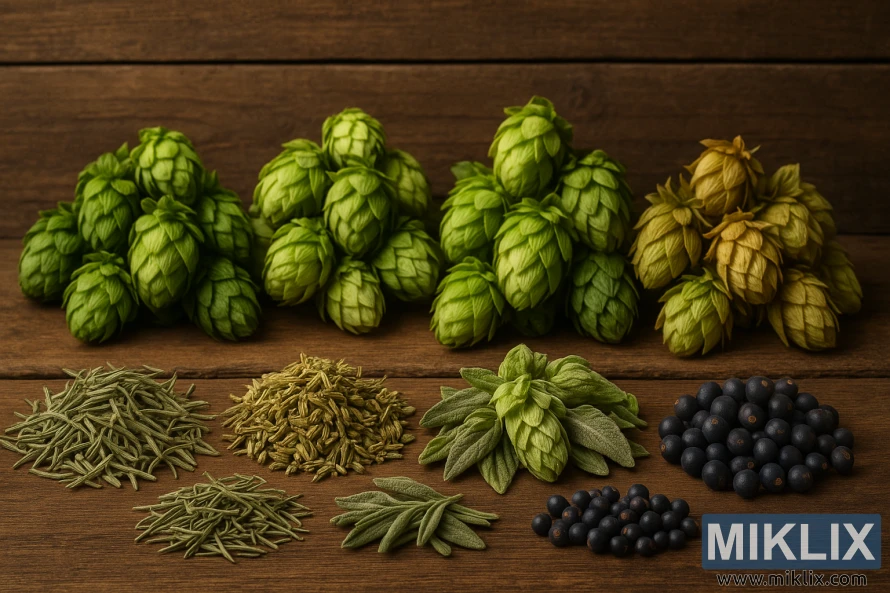
Cost Considerations and Availability
Centennial Hops are a favorite among brewers, but their cost and availability vary. Several factors influence these prices. Crop yield, demand, and weather conditions at hop farms play a role.
The availability of Centennial Hops can also change. This is due to regional hop production. For example, the Pacific Northwest's significant hop production affects national supplies.
Brewers need to consider these factors when planning their brews and budgeting for hops. Keeping up with market trends and future price changes is key. This helps brewers make smart choices.
- Monitor regional hop production reports
- Stay updated on market trends and forecasts
- Consider contracting with suppliers for consistent pricing
By staying informed and proactive, brewers can manage the challenges of Centennial Hop costs and availability.
Quality Assessment Guide
To achieve the best brewing results, evaluating the quality of your Centennial Hops is essential. This involves examining several key factors that directly impact the brewing process.
Several characteristics determine the quality of Centennial Hops. These include alpha acid content, beta acid content, and the hop's flavor and aroma profile. Here are some key considerations:
- Alpha Acid Content: This is a critical factor as it contributes to the beer's bitterness.
- Flavor and Aroma Profile: Centennial Hops are known for their floral, citrus, and fruity flavors. These can enhance the beer's overall character.
- Moisture Content: Hops with high moisture content are more susceptible to degradation and contamination.
When evaluating the quality of your Centennial Hops, consider storage and handling practices. Proper storage in a cool, dry place can help preserve the hop's quality.
By carefully assessing the quality of your Centennial Hops, you can ensure your beer achieves the desired flavor and aroma profiles. This ultimately leads to a better brewing outcome.
Conclusion
Mastering Centennial Hops demands a thorough grasp of their distinct traits and brewing methods. It's evident that Centennial Hops are a versatile and flavorful option, capable of elevating any beer. Through this article, you've discovered their unique aroma and flavor, making them ideal for various beer styles.
To successfully incorporate Centennial Hops into your brewing, experimenting with different techniques is vital. Pairing them with other hop varieties will unlock their full flavor. This approach allows you to craft complex, balanced beers that highlight their unique qualities.
Remember, practice and patience are essential as you continue your brewing journey. With a solid understanding of Centennial Hops' characteristics and brewing techniques, you're on the path to creating exceptional beers. These will surely impress even the most discerning palates.
Further Reading
If you enjoyed this post, you may also like these suggestions:
